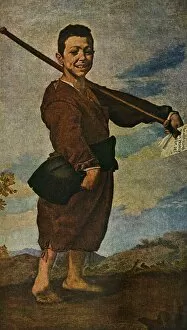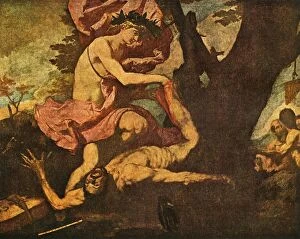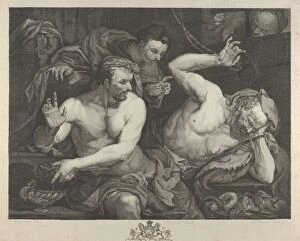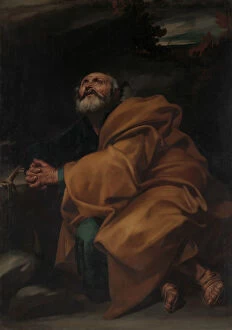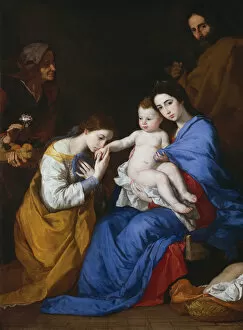Jusepe De Collection
Jusepe de Ribera, a renowned Spanish artist active in Italy during the 17th century, left an indelible mark on the art world with his masterful creations
For sale as Licensed Images
Choose your image, Select your licence and Download the media
Jusepe de Ribera, a renowned Spanish artist active in Italy during the 17th century, left an indelible mark on the art world with his masterful creations. One of his notable works is "Apollo and Marsyas, " painted in 1637. This captivating piece depicts the mythological tale of Apollo flaying Marsyas alive as punishment for challenging him to a musical contest. In another masterpiece titled "The Club-Foot" from 1652, Jusepe de Ribera showcases his ability to capture human emotion and vulnerability. The painting portrays a man with a clubfoot, symbolizing physical disability but also emphasizing strength and resilience. Moving on to biblical themes, Jusepe de Ribera's "Joseph interpreting the dreams of Pharaoh's chief butler and baker" (1766) explores Joseph's gift of dream interpretation. This work delves into the intricate details of Joseph's role in ancient Egypt while highlighting his wisdom and divine connection. "The Tears of Saint Peter, " created around 1612-13, presents an emotionally charged scene where Saint Peter repents after denying Jesus three times before His crucifixion. Through meticulous brushstrokes, Ribera captures Peter's remorse and inner turmoil beautifully. Another religious composition by Jusepe de Ribera is "The Holy Family with Saints Anne and Catherine of Alexandria" (1648). This enchanting artwork portrays Mary, Joseph, baby Jesus surrounded by saints Anne and Catherine in an intimate family setting that exudes love and devotion. Ribera's talent extends beyond traditional religious subjects; he also ventured into depicting dreams like in "El Sueno De Jacob" (Jacob's Dream), completed in 1639. In this piece inspired by Genesis' story about Jacob seeing angels ascending to heaven on a ladder while sleeping outdoors, Ribera skillfully brings forth mystical elements combined with vivid imagination. Although not directly related to Jusepe de Ribera's works, there are other artistic renditions of the artist himself.

